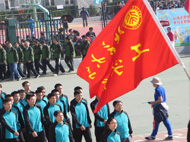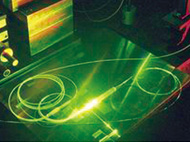主办:材料科学与工程系
报告人:Prof. Stefano Agnoli University of Padova
时间:9月23日(周一)15:00-17:00
地点:力学楼434会议室
主持人:张艳锋 研究员
Abstract:
The (re-)discovery of 2D materials has produced a long ranging impact on different fields of chemistry, physics and materials science. Also catalysis has not been immune to the charm of 2D materials, offering many examples of how the extraordinary properties of 2D materials such as outstanding electronic conduction, huge surface area, enhanced photoabsorption to name a few, have been exploited in chemical conversion.
During this talk, I will present some recent works on the use of 2D oxides and transition metal chalcogenides in the field of electrochemistry. In particular, I will focus on different strategies for the enhancement of the electrochemical activity: on the one hand through the exploitation of special intrinsic defects (i.e. metal twin boundaries in selenotellurides), on the other hand through an intrinsic quantum effect such as electron tunneling (in ultrathin oxide films on metals).
I will also show some results about graphene acid, a very special graphene derivative characterized by a dense functionalization of the basal plane with carboxyl groups. Differently from graphene oxide, this new material maintains excellent electron conduction and transfer properties that are at the basis of an exceptional catalytic activity either per se working as a carbocatalysts in the selective oxidation of alcohols, or in conjunction with metal nanoparticles and heterogenized molecular catalysts for C-C coupling reactions (C-H activation and Suzuki-Miyaura coupling).
Biography:
Prof. Stefano Agnoli graduated in Materials Science in 2002 at the University of Padova, with the thesis "Oxide-on-oxide nanostructured ultrathin films: a local probe approach", carried out at the Karl Franzens University of Graz (Austria) under the supervision of prof. Gaetano Granozzi and prof. Falko P. Netzer. He was awarded a European PhD (Doctor Europaeus) in Materials Science in 2006, working on the study of ultrathin oxide films supported on metal single crystals, using different electron based techniques (XPS, PED, LEED, LEEM) combined with scanning tunnelling microscopy.
After working as a post doc researcher at the University of Padova, in 2009 he moved to Brookhaven national Lab (Upton NY USA), where he joined the catalysis group of Dr J.A. Rodriguez and studied real and model systems based on ceria and their application in the catalytic production of hydrogen.
In 2010 he obtained the position of assistant professor and later in 2015, of associate professor at the department of chemical sciences of the University of Padova. Here, his continued the study of model and real systems for catalytic applications expanding his research interest toward complex mixed oxide systems (core@shell nanoparticles, ternary oxides), new two dimensional materials (graphene based materials and transition metal dichalcogenides) and electrocatalytic processes (oxygen reduction reaction and hydrogen evolution reaction).
欢迎广大老师和同学们参加!









